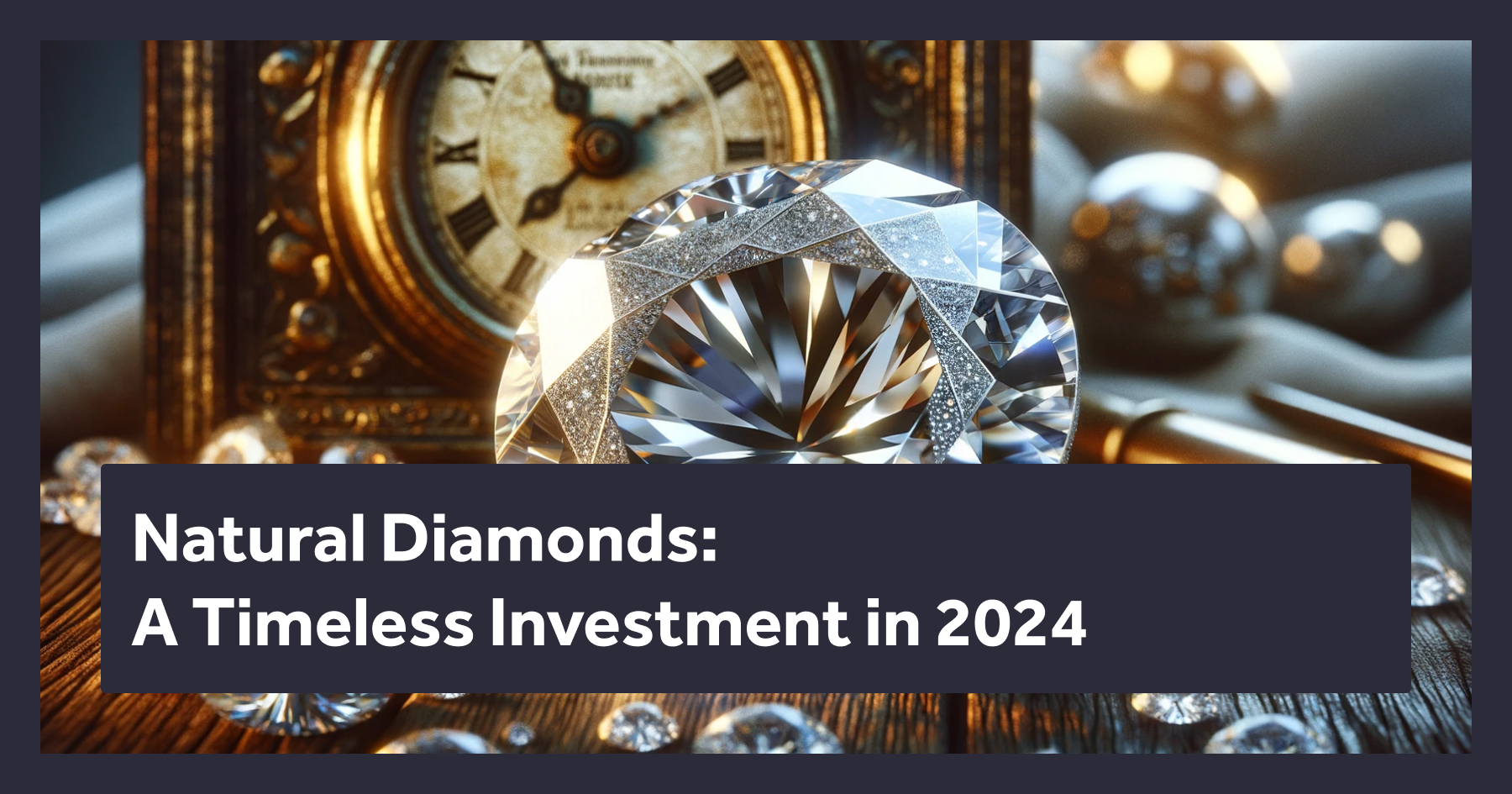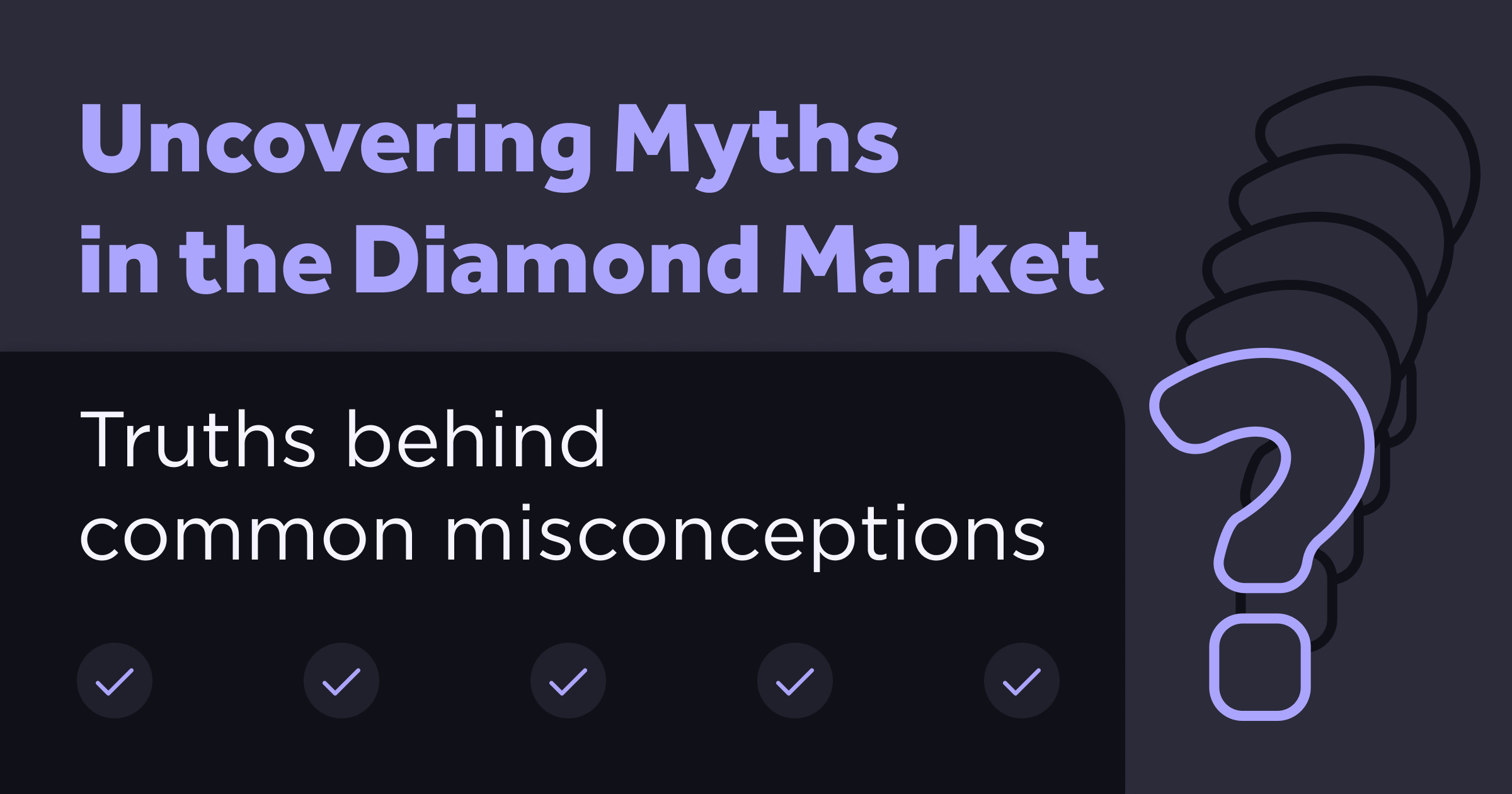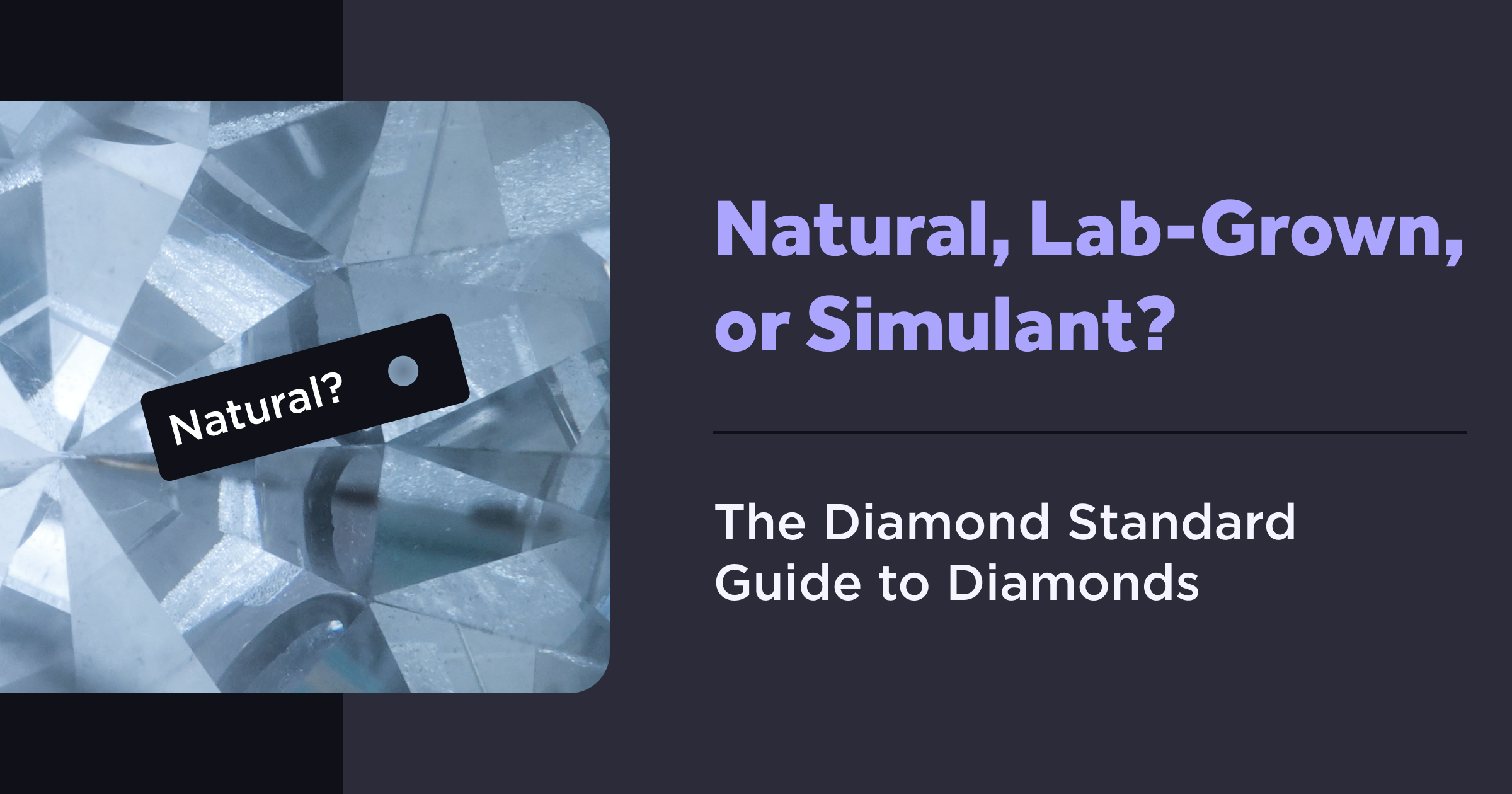This Article Explores
Diamond Prices Surge Amid Strong Demand and Lack of Supply
Experts project diamond prices will steadily increase for at least the next five years, making diamond investment assets a perfect hedge against stock and currency market uncertainties.
Competition for a dwindling supply of natural diamonds is fierce, especially as new diamond investment products dial up demand for quality stones. A multitude of factors are drastically changing the diamond industry, most notably prices, which is good news for the investor seeking a reliable commodity to round out their portfolio.
Diamonds in recent years have outperformed gold by 62% with less volatility, and that has already been reflected in the Diamond Standard Coin, which was first offered at $5,000 and recently topped $6,700.

Bain & Company reported in The Global Diamond Industry 2021-22, “Overall, in 2021, after a fall in 2019 and 2020 of 7% and 11%, respectively, rough diamond prices grew by 21%. Prices for polished diamonds, which declined by 3% and 5% in 2019 and 2020, respectively, increased only 9% year-over-year.”
A closer examination of the biggest of these factors reveals why the coming years represent an unprecedented opportunity: acquiring diamonds as investment assets.
Diamond Supply Rebounds — Partially
Amid pandemic turmoil, diamond producers scaled back mining and cutting toward the end of 2019, and many stopped producing entirely for the first half of 2020, bracing for a possible major recession. The halt in rough diamond production sent logistic shockwaves across the industry, indefinitely altering the diamond economy.
Parallel to consumer confidence, production widely came back online mid-2020 as the bull market showed no signs of relenting to the pandemic. The year still closed far short of pre-pandemic years. Rough diamond production in 2021 was still substantially lower than pre-pandemic levels, with the year ending at about 29 million carats, according to Bain.
As consumer demand spiked, diamond producers liquidated reserve inventory and ramped up production. With rough diamond reserves largely sold out, suppliers lacked the geological and technological resources to catch up to unrelenting demand for natural diamonds.
In 2022, conflict between Ukraine and Russia disrupted the diamond economy and added an element of scarcity that is already driving further price increases. In fact, the supply of rough diamonds may be cut by over 25% as Russian-owned Alrosa, the world’s largest diamond producer by volume, was placed on a sanction list as a result of the conflict, according to the industry’s Jewelers Vigilance Committee (JVC).
Diamond production in early 2022 was still shy of pre-pandemic production levels and nowhere near enough to match the surge in global demand. Diamond industry analysts predict rough diamond production will remain below pre-pandemic levels for at least five years, all but guaranteeing a gradual runup of diamond prices.
While there are myriad of factors that impact the price of diamonds, these circumstances may have a dramatic effect on the impact of future diamond pricing.

Consumers Still Drive Bulk of Diamond Demand
Most high-quality natural diamonds still flow into consumer luxury products, with jewelry topping the list of non-industrial applications. And since diamonds — like the color black — never go out of fashion, consumer demand will always play a big role in price per carat, cut, color, and clarity. Jewelry-driven demand isn’t just a constant, it is increasing as wealth and disposable incomes rise in advanced industrial countries. In China, for example, some of the surging demand for diamonds is driven by an uptick in marriages.
The COVID-19 pandemic played a significant role in the consumer diamond market’s decline in the first half of 2020. Government interventions such as economic stimulus packages, along with a decrease in consumer spending at brick-and-mortar retail stores left many with extra cash on hand going into 2021.
The diamond market rebounded in response to retailers transitioning to more online sales, and wealthy consumers started spending more after widespread COVID-19 vaccination campaigns mitigated fears of a years-long recession.
Consumer-driven demand coming out of the economic worst of the pandemic drove diamond revenues up 65% in mining, 55% in cutting and polishing, and 29% in retail from 2020, all above pre-pandemic levels. Profit margins in the industry surpassed pre-pandemic levels, but still fell short of record highs. The price of rough diamonds by the end of 2021 was up 9% from the same period in 2020.
Are Diamonds a Good Investment in 2022?
Before New York based Diamond Standard Co. announced its first-in-class “Diamond Standard Coin,” a real-world resin puck embedded with an index-standard value of diamonds, investing in diamonds as a store of wealth was limited to only very high net-worth individuals who could afford to have millions of dollars tied up — literally in pouches. Liquidating diamonds in this fashion is labor and travel intensive, with only a select few venues in the world where diamonds are regularly traded in lots. Practicality alone eliminated diamond investing as an option for the vast majority of investors.
But with the inception of indexed, regulated diamond commodities such as the Diamond Standard Coin, and, more recently the Diamond Standard Bar (10 times the value of the coin), a diamond investment fund, and soon, blockchain & fractionally tradable diamond-backed tokens, investing in diamonds is suddenly a viable option for anyone who could already invest in ETF’s, stocks, bonds, and commodities.
The Diamond Standard Fund is positioned to acquire diamonds across the globe to create these standardized investment products. The co-sponsor of Diamond Standard Fund is Horizon Kinetics, an investment advisor formed in 1994, with $7 billion AUM. Since 2015, it has been a large investor in Grayscale Bitcoin Trust, with a reputation for discovering assets. In January 2021, Horizon Kinetics launched the Inflation Beneficiaries ETF (NYSE:INFL), which grew to $850 million in its first year, returning 26% by December 31, 2021.
Under-Allocation a Strong Predictor of Near-Term Price Growth
The announcement of diamonds as a regulator-approved investment product has resonated across the industry. The anticipated 1% to 2% growth in rough diamond production over the next five years will not keep up with accelerated demand, especially now that a much broader pool of investors are indirectly competing with the consumer jewelry market for diamonds.
Precious metals saw similar evolutions as their use expanded beyond the functional and decorative and into storing value. Investors now hold at least 15% of each above-ground precious metal. Early evidence of the impact of diamond investment assets indicates a shift toward the hands of investors similar to that of precious metals.__ Presently fewer than 1% of above-ground diamonds are allocated to investors.__

As this pent-up demand among investors for a precious commodity uncorrelated to silver and gold draws diamonds out of circulation, the entire diamond market will see an upward price adjustment year-over-year.
The introduction of additional diamond investment assets such as a Diamond ETF (DIAM), a diamond-backed exchange traded token called Bitcarbon, and eventual addition of global diamond ETF’s and diamonds tradable globally in commodities markets along side metals such as gold, silver, platinum, and palladium, puts the rate of allocation comparable to other precious metals within ten years.
More Industry Insights




